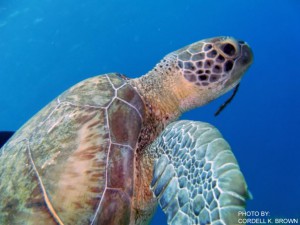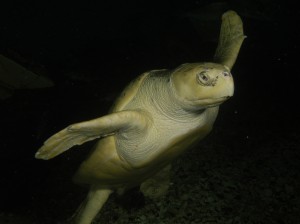Marine Mammal & Sea Turtle Week (Part 4 of a 5-part Series)
With Memorial Day Weekend upon us, summer is unofficially here for New Jerseyans. That means plenty of tourists enjoying shore, sand, surf, and sun – but it also means other types of annual summer visitors to our coast: bottlenose dolphins, sea turtles, and whales. However, what may be inspiring sightings from a healthy distance can become tragic encounters when marine animals become stranded or entangled in nets.
This story marks the fourth of five blog stories spotlighting New Jersey’s marine mammals and sea turtles – and educating people how to help animals in need, rather than make a bad situation worse.
Part 1, on Monday, revealed the bottlenose dolphin die-off striking the Eastern Seaboard. Part 2, on Tuesday, featured a Question-and-Answer on the dolphin mortality event with NOAA’s MendyGarron. Part 3, yesterday looked at how people can safely help stranded marine mammals without making the mistake of being a “hero”. And Part 5, tomorrow, will reveal the importance of reporting sightings – both for live or dead marine mammals.
MARINE MAMMAL & SEA TURTLE WEEK: Sea turtles navigate a dangerous path, from entanglements to cold-stunning
By Sara DeAngelo, Conservation Intern
Over 100 first responders along the coast of New Jersey attended Conserve Wildlife Foundation’s marine mammal stranding workshops this past month. Speakers and interactive discussions educated the first responders on how to handle a marine mammal or sea turtle stranding.
The term “stranding” is used for sea turtles and marine mammals that are found along the beach dead or alive. Their death or injury may be resulting from a predator, parasites, pollution, entanglement, etc. In most stranding cases, the cause of the animal stranding itself is unknown. Determining the cause of the animal stranding will help us understand what is going on in the ocean that may be harmful to certain populations.
Sea turtles, however, face a unique set of challenges. We have four species of sea turtles that may be found in New Jersey waters during the summer. Loggerheads are the most common, while green sea turtles and Atlantic leatherbacks – massive creatures weighing as much as a small car – are less frequently seen but not uncommon. Kemp’s Ridley sea turtles are the rarest visitors.
Most of these sea turtles come to New Jersey during the summer months and enjoy the warmer waters. Yet when our seasons change and the waters cool, some sea turtles may lag behind rather than returning south for warmer waters. These turtles can face “cold stunning”.
In colder waters, sea turtles do not have the capability of warming their own bodies. If a turtle is cold stunned, it looks as if it is dead because its heart rate decreases, it becomes lethargic, circulation decreases, and it may be in shock or have pneumonia.
This condition can even result in a common mistake of a passerby or first responder believing a turtle is dead, when it is actually just “cold-stunned”. Unless the sea turtle clearly looks like it has been dead for a while, it is best to report the turtle to a marine mammal and sea turtle stranding hotline.

Sea turtles can also get entangled in fishing nets. At the Conserve Wildlife Foundation workshops this month, first responders were informed to, upon sighting of an entangled or stranded animal, immediately call the Marine Mammal Stranding Center located in Brigantine, NJ, by calling 1-609-266-0538. They could also contact NOAA’s Northeast Region Marine Mammal and Sea Turtle Stranding and Entanglement Hotline by calling 1-866-755-6622.
Boaters who encounter an entangled sea turtle should try to remain near the turtle until help arrives if possible. On shifting seas, it could be hard for the expert responding to the call to locate the animal without the initial person spotting it standing by to direct them there.
One warning was made very clear in the workshop: boaters should never get into the water with a sea turtle or stranded marine mammal. It is extremely dangerous for both the responder and for the animal.
Should the sea turtle be on the beach itself, other tips are helpful for the first responders. While waiting for the trained rescue staff, the first responders were urged to secure the scene, try to keep people at least 100 feet away, and not to touch the animal. Keeping curious beachgoers distant from the animal will minimize stressing out the animal even more. The responders were told that calling the local police department may help enforce the directions to keep back from the animal.

ADDITIONAL LINKS
- CWF On-line Field Guide: Atlantic Green Turtle
- CWF On-line Field Guide: Atlantic Leatherback
- CWF On-line Field Guide: Atlantic Loggerhead
- CWF On-line Field Guide: Kemp’s Ridley Turtle
Discover more from Conserve Wildlife Foundation of NJ
Subscribe to get the latest posts sent to your email.